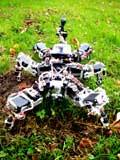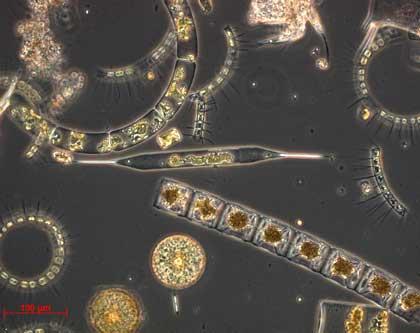Chaotic cockroach
2010/01/19 Kortabitarte Egiguren, Irati - Elhuyar Zientzia
Click on the image to watch the video
Based on the theory of chaos, several researchers from the German Centre for Computational Neurosciences Bernstein have developed a roach robot, AMOS.
The AMOS robot consists of six legs, 18 motors to control the movement of the legs and 18 sensors to inform about heat, luminosity and contact with the ground. The aim of the researchers was to develop a conventional processor capable of adapting the robot's gear quickly and automatically to the changes that occur in the environment.
For this they have been based on the theory of chaos. According to this theory, systems are very sensitive to small changes that, in turn, can cause major changes. Researchers have built a simple circuit to overcome complex behaviors. The processor of this circuit uses a chaotic algorithm to create and classify possible modifications, immediately eliminating improper changes.
Thanks to this chaos control technique, the AMOS robot can travel through rough and hard lands, escape predators and choose an energy saving march when the slope rises. It is also able to maintain balance when you lose balance or put your foot in a hole and take your foot out of the hole.
They have seen that this combination of chaos theory and robotics can help understand animal movements and that it can have medical applications such as epilepsy, parkinson's or stabilization of damaged neuronal activity in migraine patients. Among other things, German researchers investigate some of the waves that occur in the brain before migraines appear, as they believe that some reactions that occur in the brain in healthy people remove those waves. Therefore, chaos control may be used in the future to remove these waves.Image courtesy of: P. Manoonpong et at.

Gai honi buruzko eduki gehiago
Elhuyarrek garatutako teknologia







